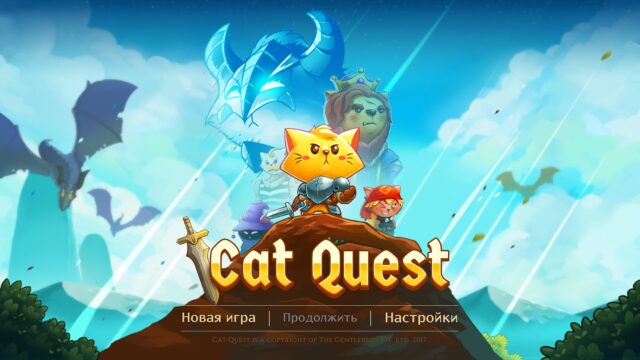Steam Library: As Far as the Eye
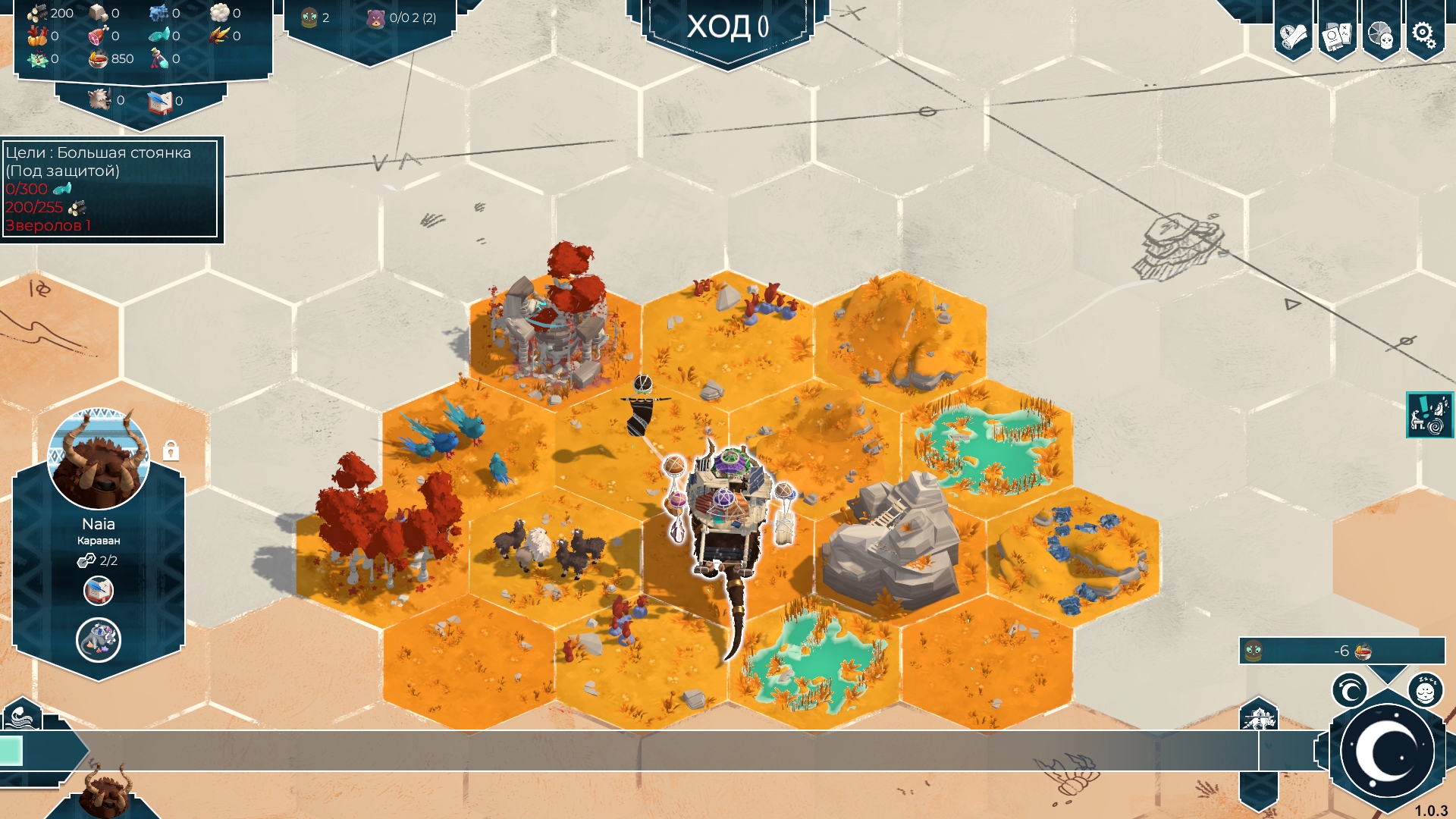
As Far as the Eye, despite being a mix of turn-based economic strategy and roguelike, somehow tries to lull its gamers. The game promises peaceful journeys through endless fields, meadows, mountains, forests, and lakes, a spiritual pilgrimage of lemurs to their Promised Land. Which, by the way, also happens to be a world ark capable of protecting its inhabitants from the approaching global flood. The local residents belong to the legendary tribe of artistic peaceful natives, running around meadows with balloons and all gifted with exotic-soothing names like Oolmo or Uugi-Boogi.
Until you start playing, you think, “What kind of herbivorous kingdom have I stumbled upon?”
Then, under your sensitive but clumsy command, the settlers begin to starve, get sick, and injure themselves out of sheer boredom. After that, they are bombarded, a fire breaks out around the camp, a hurricane carries away your entire tent city into oblivion, and eventually the lemurs go underwater because they were caught by the very same worldwide flood. It turns out that the setting is just a setting, and cunning roguelike puzzles do exist in AfatE.
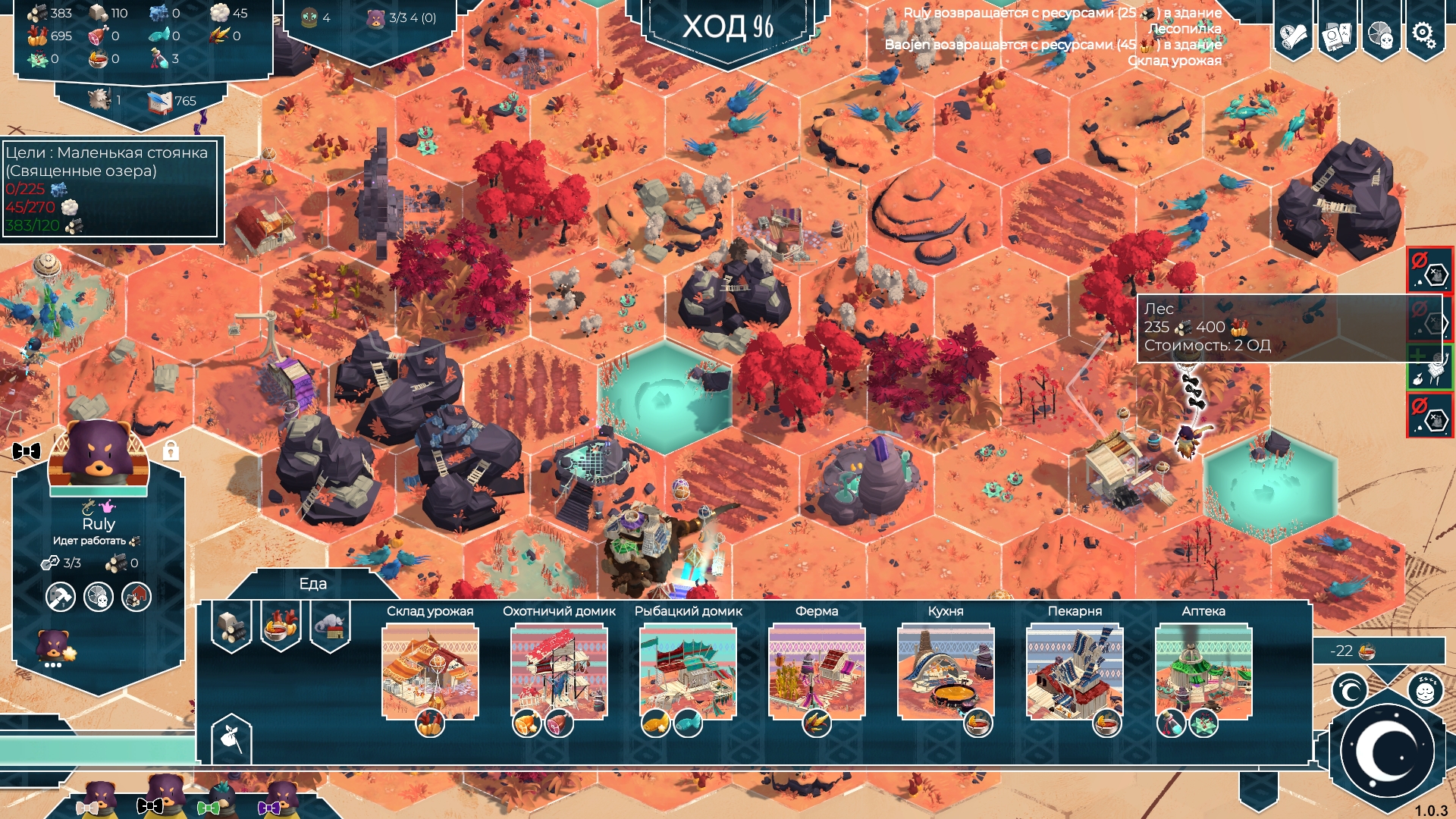
Journey to the center of the world
In order to reach the happy ending, the player will need to organize a tour for the lemmings to several wild stops. Imagine chains of events in FTL: Faster Than Light or Slay the Spire, but without text adventures and endless battles, but with compact locations. These need to be quickly explored, mastered, and freed from some resources, and then move on.
Sometimes, there are lottery ruins at the stops, visiting which can either greatly ease your life or ruin the whole game. Plus, friendly caravans sometimes pass by.
In general, everything seems simple in reverse. You land on the terrain, examine where it is best to place a sawmill in a hexagon, where it is more profitable to carry stones, where the most abundant fields are, and so on, then you deploy vigorous activity, and voila – the caravan is fed, healthy, trained, and ready to move on. And it’s true, some have been arranging economic solitaire games in isometric spaces for decades. They scared you with a limit of a hundred moves per location, you know.
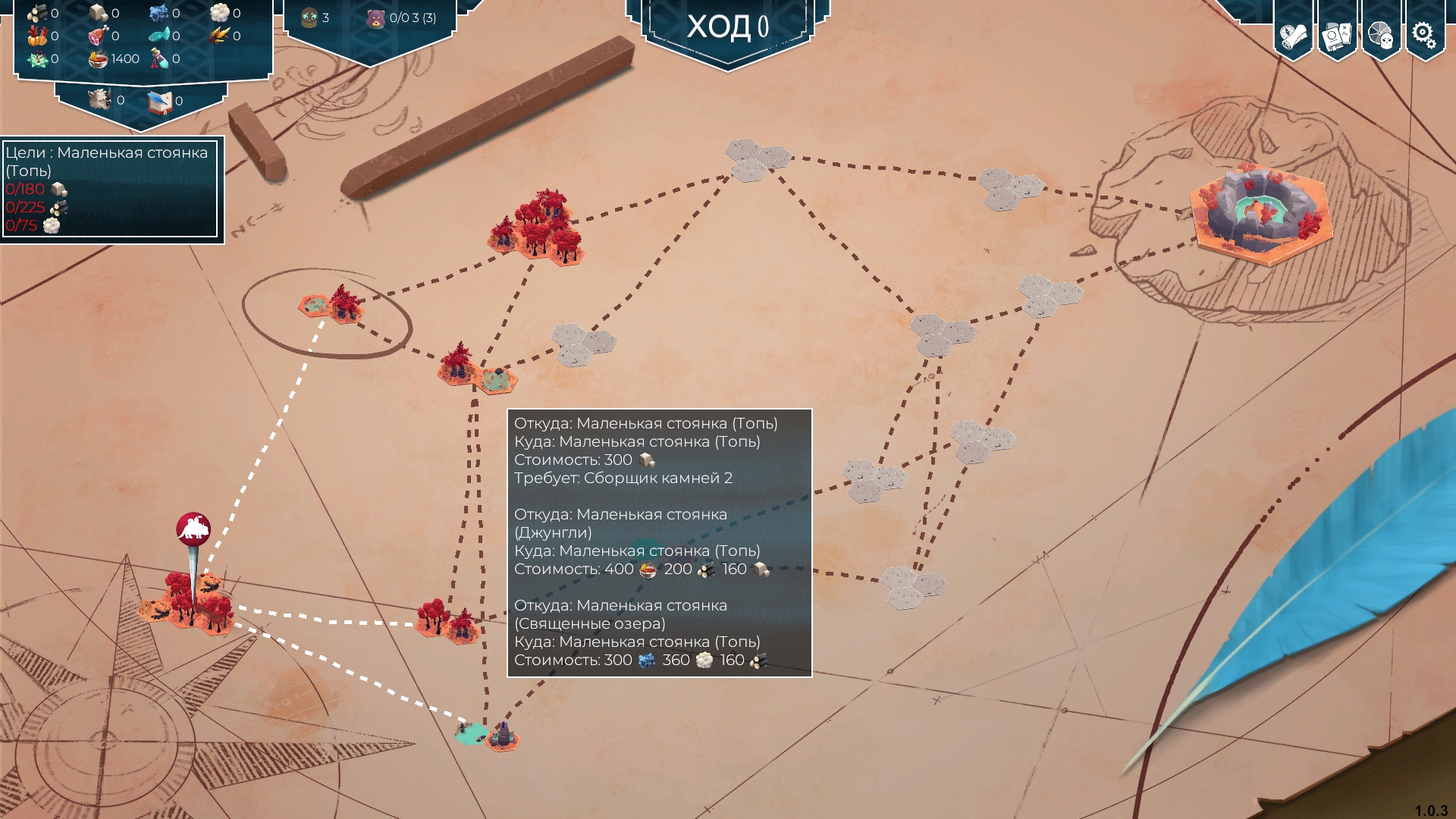
But suddenly it turns out that firstly, you are unlikely to simply collect the 200 units of wool that the game requires from you as a tax for advancing on the global map. Because there are only 210 units of this wool per location, and you absolutely need to build a mobile kitchen because you can’t go any further without it. Secondly, AFatE promised to unleash an inevitable rat invasion in three turns. These friends of lemmings will definitely devour almost all of your food supplies, so for the next 20 turns, you will be busy not with the wool puzzle, but with survival and frantic food gathering. Finally, 15 turns before the game over, when you barely managed to deal with urgent problems and almost accumulated the miserable wool, the game announces a thunderstorm, causing all the sheep to scatter in fear, and there is no one to shear. Filling up with valerian, you build a market, try to trade resources, and only two turns before the flood, you realize that you simply won’t have time to get the caravan out of this cursed enchanted forest.
It’s time to start a new game.
We are moving
We will repeat ourselves, despite the pleasant picture and the overall idyllic atmosphere, AFatE does not hesitate to drown gamers in random misfortunes and rarely, very rarely forgives mistakes. The game particularly dislikes it when you, having mastered one seemingly universal opening, try to skip through it all the way to the finish. AFatE will endlessly beat such clever ones on the nose, not allowing them to even complete the tutorial campaign. You will definitely have to adjust your tactics for each individual location and each individual scenario.
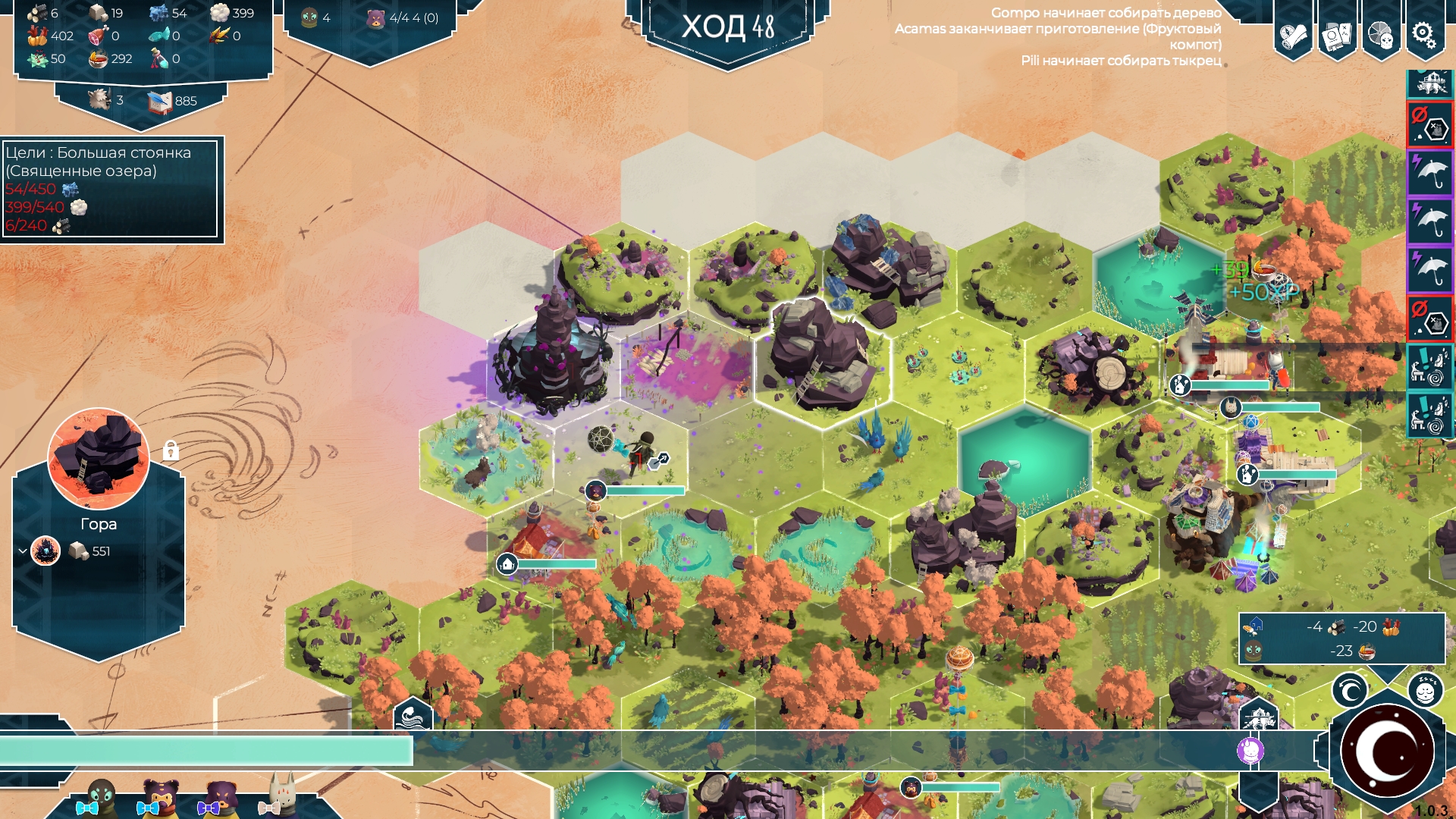
To prevent gamers from getting bored after a couple of successful journeys, the designers at AfatE came up with four different starting tribes with different initial conditions. The Eternal Summer tribe is our starting comrades without any obvious advantages or disadvantages, traveling through peaceful lands. The Eternal Spring tribe are lovers of traveling in large groups, vibrant personalities with particularly rich sets of positive traits (read “perks”) like “Gains 20% more experience” and disadvantages like “Refuses to work in the quarry”. The third comrades, the Eternal Autumn tribe, are initially small in number and travel through lively lands, but they are immediately well-trained in all basic specialties. The fourth, and most hardcore, tribe is the Eternal Winter tribe, who love the calm tundra, but in addition to food, they consume wool every turn.
Believe me, these seemingly insignificant differences seriously change the course of the game. Winter comrades especially require a cool change of strategy from you. Plus, there is a constantly disappearing resource, and it feels like you’ve entered a completely new game.
And to ensure that we don’t end up trying the game for each faction once, failing everywhere, and then writing reviews like “1 out of 10, demanding a refund,” AFatE prudently lines up the tribes in a queue and doesn’t allow us to become the leader to new friends until we successfully lead our old friends at least once.

Don’t get distracted!
In general, solving local puzzles is an interesting activity. The game plus-minus successfully maintains a balance between the excitement of discovery, careful organization of field bases, and survival on the waves of the Great Random, so that you would want to go through all eight available travel options at least once and so that after one unsuccessful game, your hands itch to start another.
Yes, AFatE did not avoid two typical flaws of indie projects, namely the not fully balanced local mechanics and the not-so-convenient interface in the world. For example, in 30 hours of gameplay, I still couldn’t get used to the fact that there is no button on the screen that opens the research menu. First, you absolutely have to click on the building responsible for science, and only then find the right button in its menu.
Or maybe I’m just not very smart and stubbornly continue to overlook the necessary icons. Well, in that case, the game still fails the “Fool’s Test”; it’s just not possible to intuitively understand the AFatE interface.

I would like to point out as a disadvantage the fact that playing AFatE parties is much better when played in one go. If you get distracted from the game for about 15 minutes, the thread of the party gets lost somewhere, and it becomes strangely difficult to understand what is happening on the screen. After every first break, I just wanted to start a new journey. It seems that for a turn-based strategy, this is still a noticeable drawback.
Nevertheless, As Far as the Eye justifies its price completely. No, there is no completely endless roguelike here. Having overcome all the scenarios, you might consider going for achievements. After figuring them out, you will probably be able to call yourself a grandmaster of AfatE, and the game itself will go into the archive because it will have nothing else to surprise you with. Until then, though, it will take dozens of hours of victories, defeats, and party restarts in the hope that maybe this time you won’t have to gather 750 units of healing herbs.
Share
Discuss
More Reviews

